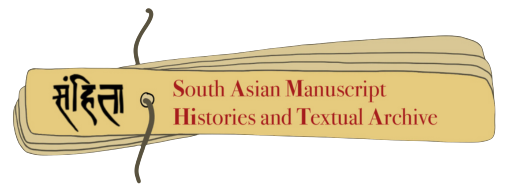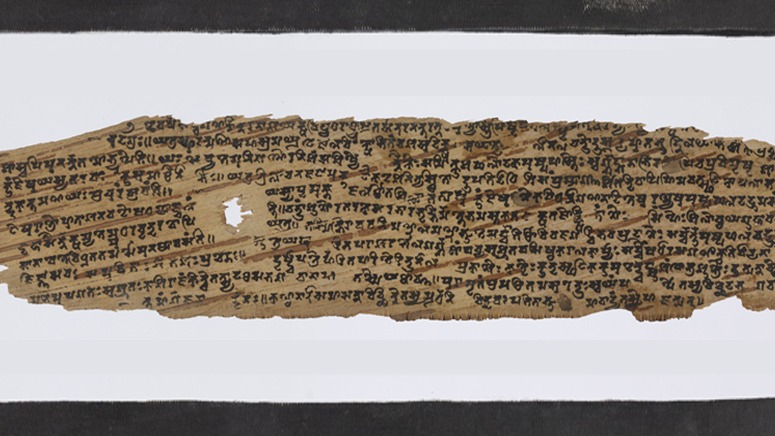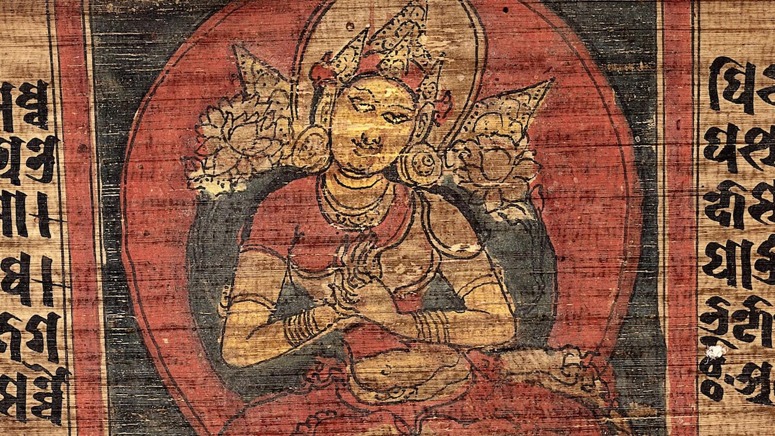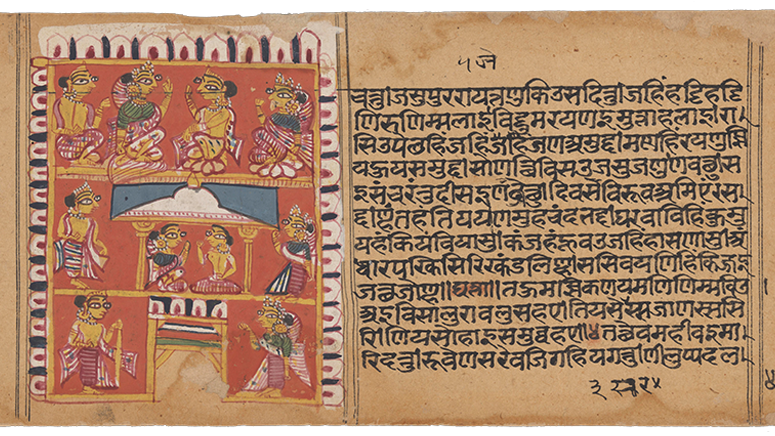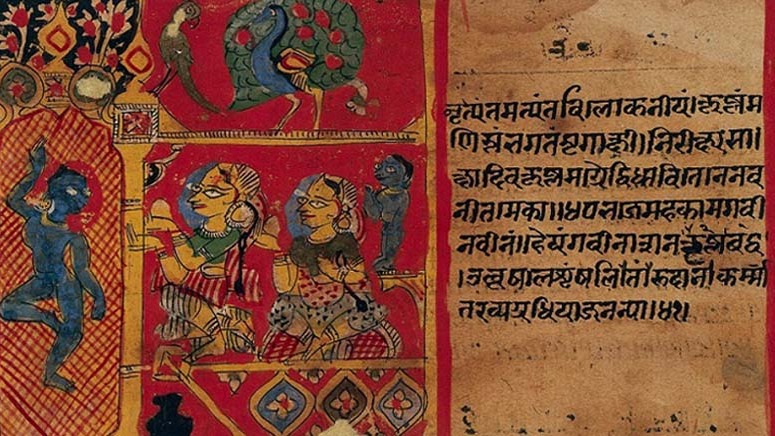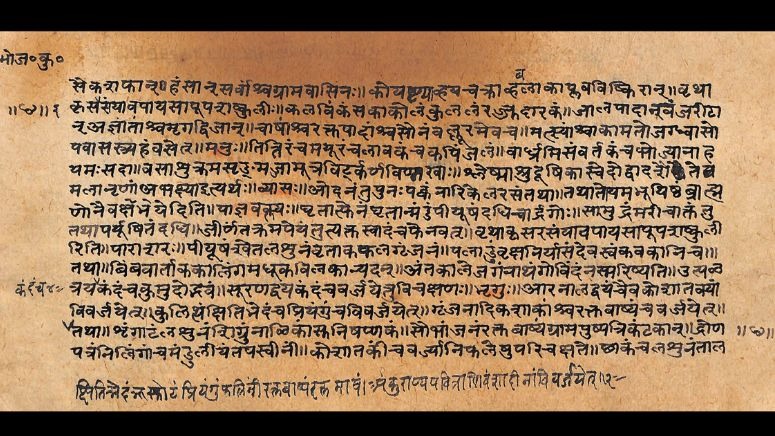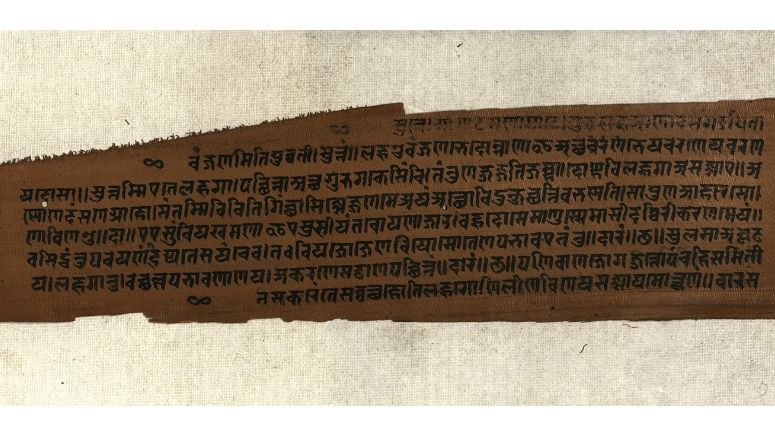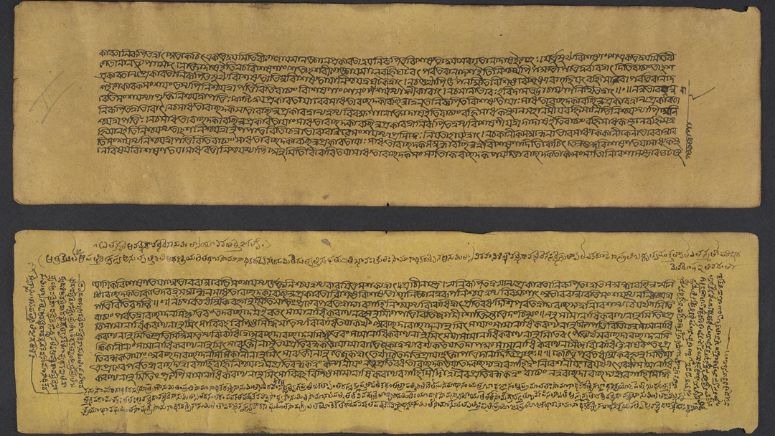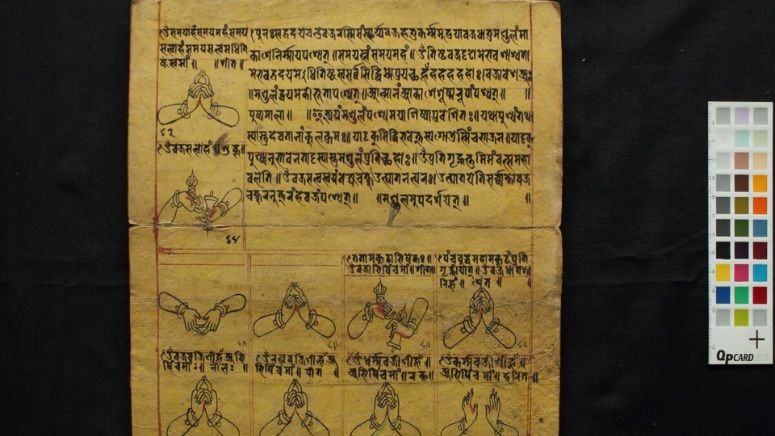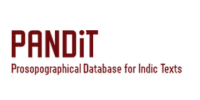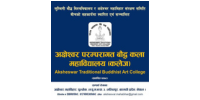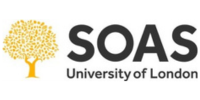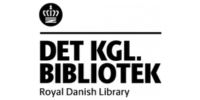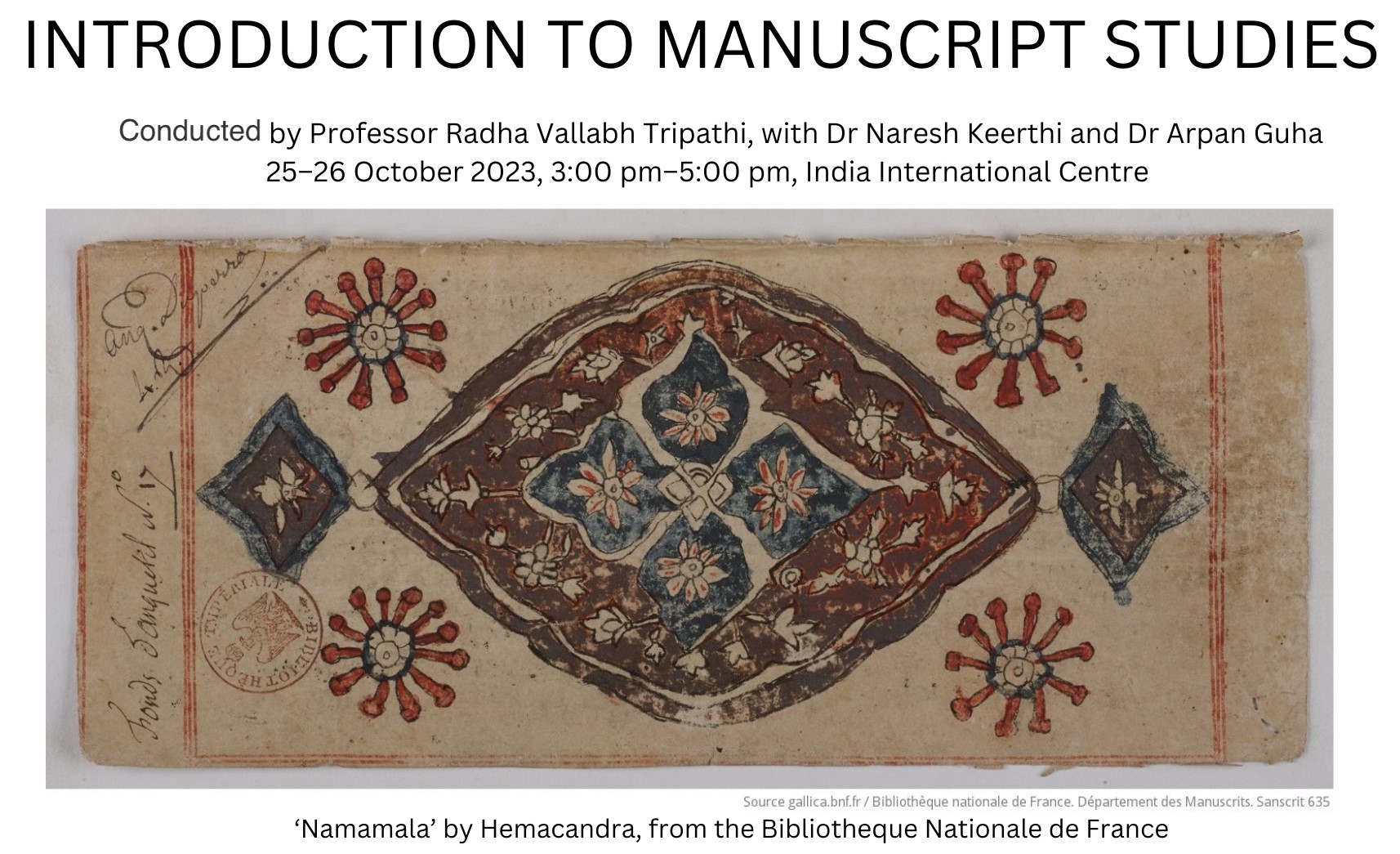In partnership with the Sanskrit Research Institute, Auroville, we have started mapping repositories across the world with holdings of Indic manuscripts, by collating data from existing bibliographic surveys, to build a list of collections organized by institution, country, size and languages.
SAMHiTA
South Asian Manuscript Histories and Textual Archive
SAMHiTA is an initiative to create a relational database and digital archive of Indian and broadly South Asian manuscripts housed in libraries, archives and other repositories outside India, through collaboration with institutional partners. The word ‘samhita’ in Sanskrit means ‘collection’ or ‘compilation’. SAMHiTA’s goal is to consolidate information dispersed across institutions on an online platform accessible to all.
India’s learned inheritance spans fields including medicine, mathematics, architecture, philosophy, aesthetics and literature. Its continuous transmission from ancient times was largely through an oral tradition and through hand-written texts (manuscripts) in different languages such as Sanskrit, Tamil, Odia, and Bengali, and scripts like Nagari, Grantha, Sharda, Newari among others, written on materials such as copper plate, birch bark, parchment, and palm leaf.
From around the 2nd–3rd centuries CE, texts fanned outwards from the Indian subcontinent to regions like Balkh, Xinjiang, Tibet, Japan, Thailand, and Bhutan. From the 18th century, Europeans began taking an active interest in Asian history, religion, philosophy, and literature. Many manuscripts were collected and taken to the West.
Today, Indic manuscripts are scattered across Asia, Europe, and North America. SAMHiTA is the first attempt to bring together repositories from outside India and South Asia on a common platform. The information collected will be shared on PANDiT: Prosopographical Database of Indic Texts and Records, a database on South Asian intellectual history.
International Collections of Indic Manuscripts
Jasahara-cariu
MS Indic beta 1471 Language : Apabhraṃśa Prakrit Scripts : Jain Devanagari
"Illustrated with watercolour on paper, this is a rare manuscript of a tale narrated by the Digambara Jain poet Raidhū in the 15th century."
Aṣṭasāhasrikā Prajñāpāramitā
EAP1296/2/7 Language : Newari Scripts : Devanagari
This foundational Mahāyāna Buddhist text is written in an exercise book, so is comparatively recent.
Saṁvarodaya Tantra
EAP1296/2/8 Language : Sanskrit Scripts : Newari
This is also called the ‘Tantra of the Emergence of Cakrasaṃvara’. A popular text among the Newar Buddhists in the Kathmandu Valley.
Acalābhiśeka
EAP1296/2/12 Language : Sanskrit and Newari Scripts : Newari
This describes Buddhist rituals and consecretion rites offered to Acala.
Vāstunāga nāgamaṇḍala jalayajña
EAP1296/2/16 Language : Sanskrit and Newari Scripts : Newari
This text describes the worship of the Nāga deity and maṇḍala.
Vajradhātu Samādhī
EAP1296/2/19 Language : Sanskrit Scripts : Newari
"This is a Buddhist tantric text, that describes various mudrās, musical instruments and holy weapons related to ritual activities. It has beautifully illustrated."
Featured Talks
Kriti-SAMHiTA: The Plurality of Indian Knowledge Systems
IIC's ongoing lecture series, ‘Kriti-SAMHiTA: The Plurality of Indian Knowledge Systems’, demonstrates how manuscripts unfold centuries-old knowledge traditions and their diffusion across regions, as well as glimpses of everyday life in the past.
The Importance of Sanskrit Manuscripts in Understanding the History of Science
Speaker
Dominik Wujastyk
Saroj and Prem Singhmar Chair of Classical Indian Polity and Society
Department of History and Classics
University of Alberta, Canada
Chair
Sudha Gopalakrishnan
Executive Director, IIC-International Research Division
India International Centre, New Delhi
10 Years of SRI: A Decade-long Journey of creating Digital Tools for Sanskrit
Speaker
Martin Gluckman
Founder, Sanskrit Research Institute (SRI)
Auroville
Chair
Sudha Gopalakrishnan
Executive Director, IIC-International Research Division
India International Centre, New Delhi
A World of Games in a Universe at Play: Exploring the Ludic Legacy of South Asia
Speaker
Jacob Schmidt-Madsen
Acting Director, Centre for the Study of Indian Science (CSIS)
University of Copenhagen
Chair
Kenneth G. Zysk
Professor Emeritus, Department of Cross-Cultural and Regional Studies
University of Copenhagen
Why SAMHiTA
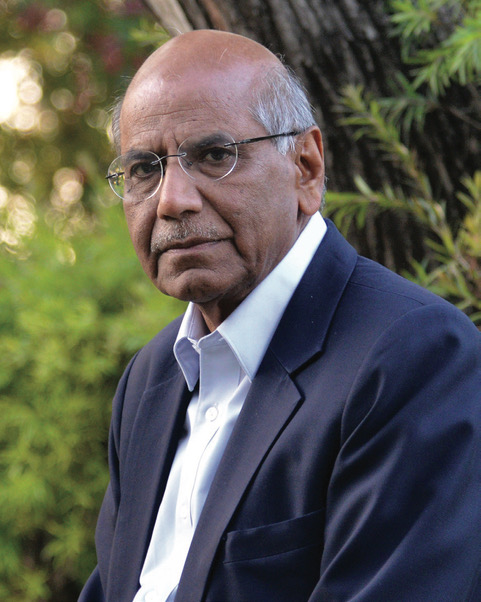
Shyam Saran
President, India International Centre
The India International Centre is proud to partner with the Ministry of External Affairs on this important project. The history of our manuscripts is intertwined with a very long history of movement of peoples, of ideas, of cultures and even scripts, across the entire space of Asia—Central Asia, West Asia, as well as Southeast Asia. In my travels through Southeast Asia and East Asia, I have found there are very valuable Indian manuscripts in Sanskrit and in Pali, which are still preserved with great care in the collections in these countries. A study of how these manuscripts travelled across this vast space and what kind of influence they have is a very important endeavour. What we seek to do is to bring about an exercise that explores all these very strong, longstanding bonds which have linked together the many countries of Asia. This is a very exciting cultural journey in which I invite all of you to participate.
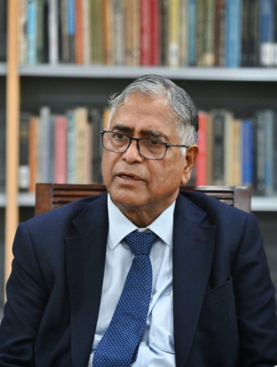
K.N. Shrivastava
Director, India International Centre
The India International Centre is privileged to engage in this project of national importance with the support of the Ministry of External Affairs. South Asia’s manuscript heritage is what connects us with our intellectual and imaginative inheritance. We are fortunate to have an exceptional diversity of scripts, reflecting distinct regional literary traditions.
Cataloguing India’s manuscript collections has been carried out over the last two centuries. The National Mission for Manuscripts did important work in survey and documentation. Indian and international universities have started admirable initiatives to make their collections accessible. What we do not have is an international collaborative effort to streamline individual efforts so as to achieve greater impact. SAMHiTA will fill this gap.
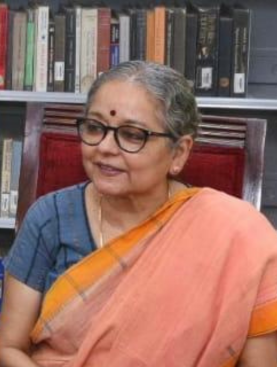
Dr. Sudha Gopalakrishnan
Project Director, SAMHiTA
The diversity of manuscripts in India and South Asia in terms of the subjects, language, scripts and materials is immense. Many of these precious manuscripts have gone out of the country and the region during different periods of time. Some of them are in a very good state of preservation in academic institutions and universities, while many of them are not accessible today even in the places they have gone. So, there is an urgent need to retrieve this knowledge and put them back together, so that the world can access them for purposes of research and deeper learning. SAMHiTA works with the PANDiT Project to put together a relational database and open digital library for manuscripts abroad. We have made a beginning and we need to go far.
SAMHiTA Knowledge Partners
Reach Us
SAMHiTA – South Asian Manuscript Histories and Textual Archive
40, Max Mueller Marg New Delhi 110003
011-24619431, 011-24609499
